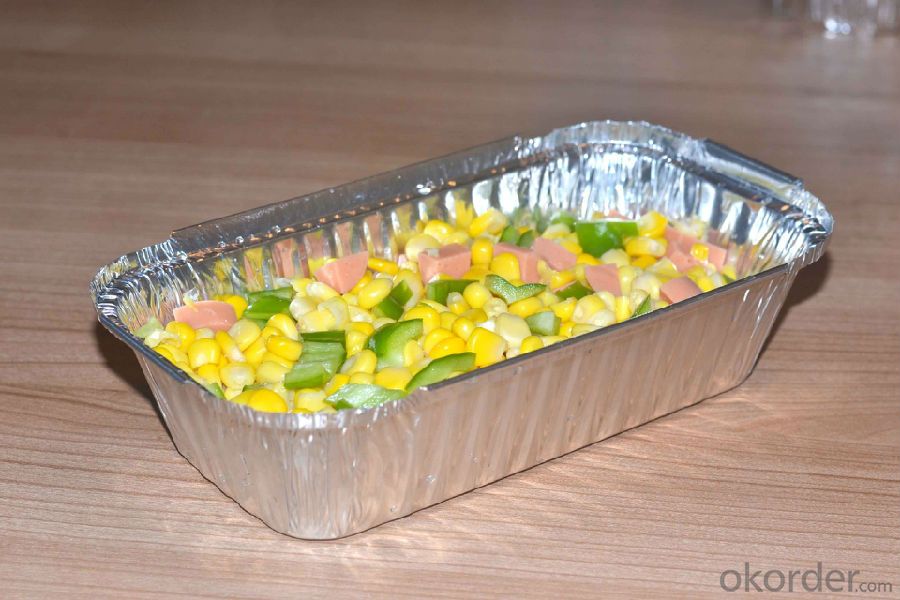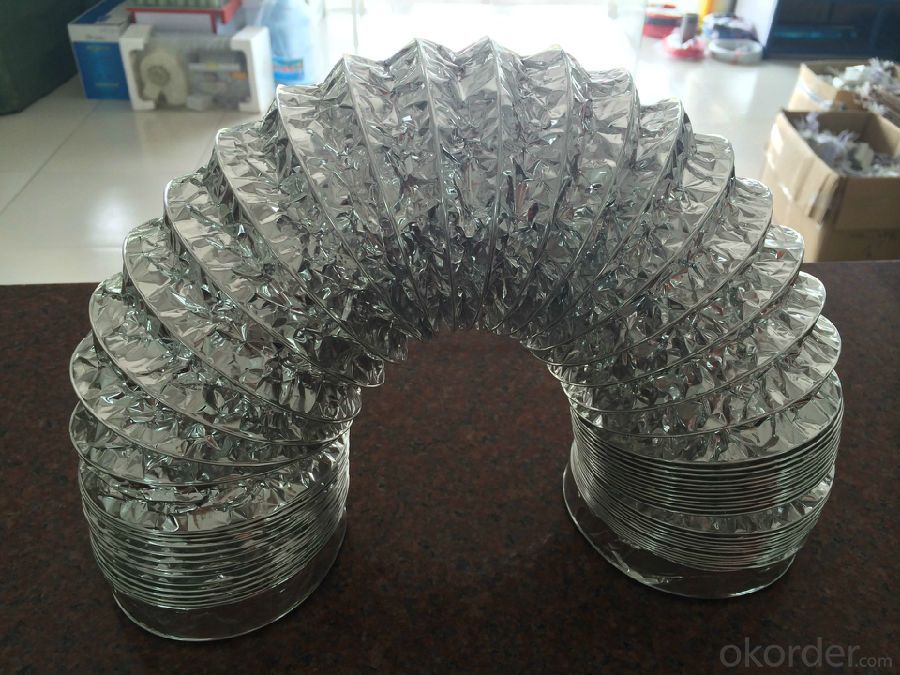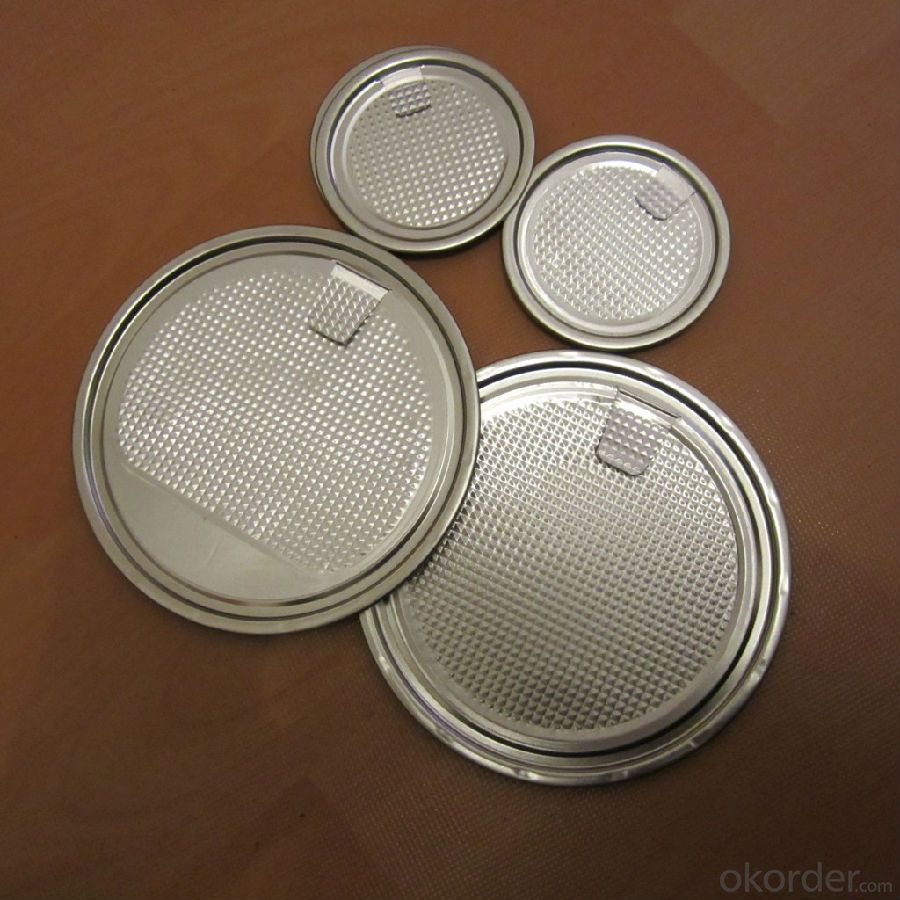Aluminium Circle for Cooking Utensiles and Cousscoussier
- Loading Port:
- Shanghai
- Payment Terms:
- TT OR LC
- Min Order Qty:
- 2 m.t.
- Supply Capability:
- 2000 m.t./month
OKorder Service Pledge
OKorder Financial Service
You Might Also Like
Item specifice
Structure of Aluminium Circle for Cooking Utensiles and Cousscoussier Description:
Coated aluminum coil/sheet are of a wide range of colors, which gives wonderful appearance no matter in residential and commercial constructions of great exhibition centers.
The coated aluminum coil/sheet have been widely used in the fields of construction and decoration( garage doors, ceiling etc.), electronic appliances, lighting decoration, air-condition air pipes, sandwich panels and drainages etc.
Main Features of the Aluminium Circle for Cooking Utensiles and Cousscoussier:
1) High flexibility
2) Impact resistance
3) Excellent weather-proof durability
4) Anti-ultraviolet
5) High erosion resist
Images of the Aluminium Circle for Cooking Utensiles and Cousscoussier:



Aluminium Circle for Cooking Utensiles and Cousscoussier Specification:
Alloy | A1100,A3003,A1050,A8011 etc |
Temper | H16,H18,H24 |
Thickness | From 0.024mm to 1.2mm |
Width | Standard width:1240mm |
Special width:1300mm,1520mm,1570mm,1595mm | |
Diameter | Standard dia:1200mm |
Interior dia:150mm,405mm,505mm | |
Weight | 2.5 T/coil,3.0 T/coil |
Coating | PE, PVDF, AC |
Surface | Embossed, mill finish, coated |
Color | AS to code RAL |
Gloss | 10-90%(EN ISO-2813:1994) |
Coating Thickness | PE: more than 18 micron |
PVDF: more than 25 micron | |
Coating Hardness (pencil resistance) | More than 2h |
Coating adhesion | 5J(EN ISO-2409:1994) |
Impact Resistance | No peeling or cracking(50 kg/cm,ASTMD-2794:1993) |
Flexibility (T-bend) | 2T |
MEK resistance | More than 100 |
FAQ:
a.What is monthly capacity
---CNBM is one stated own company and our monthly capacity is about 2000tons.
b. Now which countries do you export your goods?
---Now we export to South East Asia,Africa, North America,South America ect.
- Q:Are the aluminum sheets suitable for manufacturing marine propellers?
- Indeed, aluminum sheets prove to be a fitting choice for the production of marine propellers. The lightweight and rust-resistant nature of aluminum render it exceptionally well-suited for deployment in maritime settings, where propellers endure continuous exposure to water and severe circumstances. Aluminum propellers possess numerous benefits, encompassing an elevated ratio of strength to weight, heightened fuel effectiveness, and diminished maintenance expenses. Furthermore, as opposed to materials like stainless steel or bronze, aluminum emerges as a cost-efficient alternative. Consequently, the utilization of aluminum sheets emerges as an apt selection for the manufacturing of marine propellers.
- Q:Can aluminum sheets be used for decorative or architectural purposes?
- Yes, aluminum sheets can be used for decorative or architectural purposes. Due to their lightweight, durability, and versatility, aluminum sheets are commonly used in architectural design and construction for applications such as cladding, roofing, facades, and decorative elements. They offer various finishes, patterns, and colors, making them suitable for enhancing the aesthetic appeal of both interior and exterior spaces. Additionally, aluminum sheets are resistant to corrosion and require minimal maintenance, making them a popular choice for decorative and architectural purposes.
- Q:How do you prevent oxidation of aluminum sheets?
- To avoid oxidation of aluminum sheets, several techniques can be utilized. One commonly used method is to apply a protective coating or finish on the surface of the aluminum sheets. This coating acts as a barrier between the aluminum and the external environment, preventing the metal from reacting with oxygen and forming an oxide layer. There are various types of coatings available for this purpose, such as anodizing, painting, and powder coating. Anodizing involves creating a controlled oxide layer on the aluminum surface through electrolysis. This oxide layer is highly resistant to corrosion and provides excellent protection against oxidation. Painting and powder coating, on the other hand, involve applying a layer of paint or powdered polymer to the aluminum surface. These coatings create a physical barrier that shields the metal from oxygen and moisture. Another effective approach to prevent oxidation is by using aluminum alloys that have enhanced corrosion resistance. These alloys are specifically designed to have a higher resistance to oxidation and can withstand exposure to harsh environments without forming a significant oxide layer. In addition to coatings and alloy selection, proper storage and handling practices play a crucial role in preventing oxidation. It is important to store aluminum sheets in a clean, dry, and well-ventilated area to minimize exposure to moisture and corrosive elements. Contact with acidic or alkaline substances should be avoided, as they can accelerate the oxidation process. Regular cleaning and maintenance of aluminum sheets also help prevent oxidation by removing any contaminants that could promote corrosion. In summary, preventing oxidation of aluminum sheets involves a combination of protective coatings, appropriate alloy selection, and proper storage and handling practices. By implementing these measures, the lifespan and durability of aluminum sheets can be significantly improved.
- Q:What is the use?
- A series of 1000, representing the 1050106010701000 series aluminum is called pure aluminum, all in series 1000 series aluminum content belongs to one of the largest series. The purity can reach more than 99%. Because the technology does not contain other elements, the production process is relatively simple, the price is relatively cheap, is most commonly used in the conventional industry a a series of circulation on the market for most of the 1050 and 1060 series.1000 series aluminum plate to determine the minimum aluminum content in this series according to the amount of the last two Arabia figures, such as the 1050 series of the last two Arabia number 50, according to the international brand naming principles, content must reach to the top 99.5% qualified products. Aluminum Alloy technical standards China (gB/T3880-2006) is also clear that the aluminum content of 1050 aluminum content reached 99.5%. the same 1060 series aluminum must reach above 99.6%.The two and 2000 series aluminum 2A16 (LY16) 2A06 (LY6) features of 2000 series aluminum is high hardness, which belongs to the copper content is the highest, probably around 3-5%.2000 series aluminum plate belongs to aviation aluminum, currently in the conventional industries should not be used. Our current production of 2000 series aluminum manufacturers quality can not less. Compared with foreign countries. Currently imported aluminum is mainly provided by the production enterprises of South Korea and Germany. With the rapid development of China's aerospace industry, aluminum production technology of the 2000 series will be further improved.
- Q:What is the difference between aluminum plate and aluminum-plastic plate?
- The difference is as follows: 1, different layers: single aluminum plate is divided into two layers, the surface layer is aluminum skin, second layers of plastic, aluminum plate is divided into three layers: the surface layer and the third layer is an aluminum sheet, the middle is plastic, or aluminum plate than single aluminum plate a layer of aluminum skin; 2, the quality of different because: aluminum sheet aluminum plastic board less than a layer of aluminum skin, so the single aluminum plate than the aluminum plate quality will certainly be worse; 3, the price is different: single aluminum plate is cheaper than aluminum plate, aluminum plate positioning for low-grade, aluminum-plastic plate according to the quality and thickness of plastic and aluminum skin into the middle different grades, but certainly more than the single aluminum plate and expensive; 4, the construction effect is certainly not the same: a plastic plate can be slotted, bending turning construction construction, suitable for a variety of occasions, but not the single aluminum plate slot, bending, and because the bottom is plastic, such as plastic bonding effect Board.
- Q:Can aluminum sheet withstand heavy loads?
- Yes, aluminum sheet can withstand heavy loads. Aluminum is known for its high strength-to-weight ratio, making it an excellent choice for applications that require durability and load-bearing capabilities. Aluminum sheets are commonly used in industries such as aerospace, automotive, construction, and marine, where heavy loads are involved. Additionally, aluminum's inherent corrosion resistance further enhances its ability to withstand heavy loads over extended periods. However, it is important to consider the specific grade and thickness of the aluminum sheet, as different alloys and thicknesses have varying load capacities.
- Q:Are aluminum sheets suitable for outdoor signage?
- Indeed, outdoor signage greatly benefits from the usage of aluminum sheets. Renowned for its durability and resistance to weather conditions, aluminum is capable of enduring the relentless forces of the outdoors, such as rain, wind, and sunlight. Furthermore, its corrosion-resistant properties make it the perfect choice for extended outdoor usage. Moreover, aluminum sheets possess the advantage of being lightweight, ensuring effortless handling and installation. Additionally, they can be conveniently cut, bent, or molded to fashion diverse signage designs. Given its sleek and professional aesthetic, aluminum is widely favored for outdoor signage in both commercial and industrial environments.
- Q:What is the maximum temperature that aluminum sheets can withstand?
- The maximum temperature that aluminum sheets can withstand depends on several factors such as the alloy composition, thickness, and intended application. Generally, aluminum has a melting point of around 660 degrees Celsius (1220 degrees Fahrenheit). However, aluminum sheets can typically withstand much higher temperatures without melting or deforming. For most commercially available aluminum alloys, the maximum temperature for continuous use ranges from 200-300 degrees Celsius (390-570 degrees Fahrenheit). Beyond this range, the material may start to experience reduced strength and increased susceptibility to deformation or damage. However, it is important to note that the specific maximum temperature limit for a particular aluminum sheet should be determined by consulting the manufacturer's specifications or conducting specific testing. Factors such as the presence of coatings or surface treatments, exposure to heat for extended periods, and thermal cycling can also affect the maximum temperature tolerance of aluminum sheets.
- Q:Can aluminum sheet be used for decorative purposes?
- Yes, aluminum sheet can be used for decorative purposes. Aluminum is a versatile material that can be easily shaped, cut, and formed into various designs, making it ideal for decorative applications. It can be used to create decorative panels, sculptures, signage, furniture, and many other decorative elements. Additionally, aluminum can be anodized or painted in a wide range of colors, allowing for further customization and enhancing its aesthetic appeal. Its lightweight nature and resistance to corrosion also make it a practical choice for both indoor and outdoor decorative purposes.
- Q:i bought a light fixture for my bathroom wall and the ground wire is aluminum and the existing ground wire in the wall is copper,so i would like to know if i can join them and if so,how?
- Yes, in this case. Long ago, house wiring was allowed with aluminum wiring. But, shorts were resulting from dissimilar metals touching, while conducting large current and in the presence of electrolitic moisture. The dissimilar metals touching was a problem due to electrolytic corrosion taking place- any time two dissimilar metals come in contact in the presense of an electrolytic solution, corrosion takes place. However, in your case, you are connecting a ground wire, that does not normally conduct- it will only conduct in case of a short or other failure to ground. You are not installing this in a place where salty, moist air is a concern (the electrolyte)- so, it's okay.
1. Manufacturer Overview |
|
|---|---|
| Location | |
| Year Established | |
| Annual Output Value | |
| Main Markets | |
| Company Certifications | |
2. Manufacturer Certificates |
|
|---|---|
| a) Certification Name | |
| Range | |
| Reference | |
| Validity Period | |
3. Manufacturer Capability |
|
|---|---|
| a)Trade Capacity | |
| Nearest Port | |
| Export Percentage | |
| No.of Employees in Trade Department | |
| Language Spoken: | |
| b)Factory Information | |
| Factory Size: | |
| No. of Production Lines | |
| Contract Manufacturing | |
| Product Price Range | |
Send your message to us
Aluminium Circle for Cooking Utensiles and Cousscoussier
- Loading Port:
- Shanghai
- Payment Terms:
- TT OR LC
- Min Order Qty:
- 2 m.t.
- Supply Capability:
- 2000 m.t./month
OKorder Service Pledge
OKorder Financial Service
Similar products
New products
Hot products
Related keywords





























